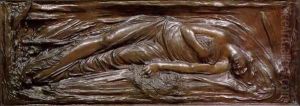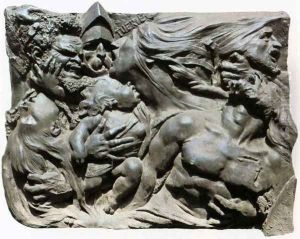Antoine Preault Paintings
Antoine-Augustin Préault was a French sculptor who emerged as a prominent figure in the Romantic movement, a period marked by its emphasis on emotion, individualism, and the glorification of the past and nature. Born on October 6, 1809, in Paris, France, Préault's early life was set against the backdrop of a rapidly changing French society in the aftermath of the French Revolution and the Napoleonic Wars. His artistic journey began at the École des Beaux-Arts in Paris, where he studied under renowned figures such as François-Édouard Picot and James Pradier. However, Préault's unconventional style and rebellious spirit often put him at odds with the academic establishment of his time.
Préault's work is characterized by its dramatic intensity, emotional depth, and sometimes, its dark, brooding quality. He was deeply influenced by the Romantic literature of his time, drawing inspiration from the works of Victor Hugo and other contemporary writers. This influence is evident in one of his most famous works, 'Ophelia,' a sculpture that captures the tragic Shakespearean character in a moment of profound despair and beauty. Throughout his career, Préault struggled for recognition and acceptance by the official art institutions of France. His submissions to the Salon, the official art exhibition of the Académie des Beaux-Arts in Paris, were frequently rejected, which fueled his reputation as an outsider and a rebel in the art world.
Despite these challenges, Préault's talent and unique vision did not go unnoticed. He received commissions for public monuments and contributed to the decorative program of several important buildings in Paris, including the Palais de Justice and the Louvre. His work for the Church of Saint-Germain-l'Auxerrois, featuring a series of dramatic, expressive sculptures, is considered a masterpiece of Romantic sculpture.
Antoine-Augustin Préault's influence extended beyond his lifetime, inspiring future generations of artists who sought to break free from the constraints of academic art. He died on January 11, 1879, in Paris, leaving behind a body of work that continues to be celebrated for its emotional power and artistic audacity. Préault's legacy is that of a pioneer who dared to express the tumultuous spirit of his age through the medium of sculpture, making him a key figure in the history of French art.

